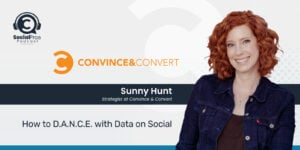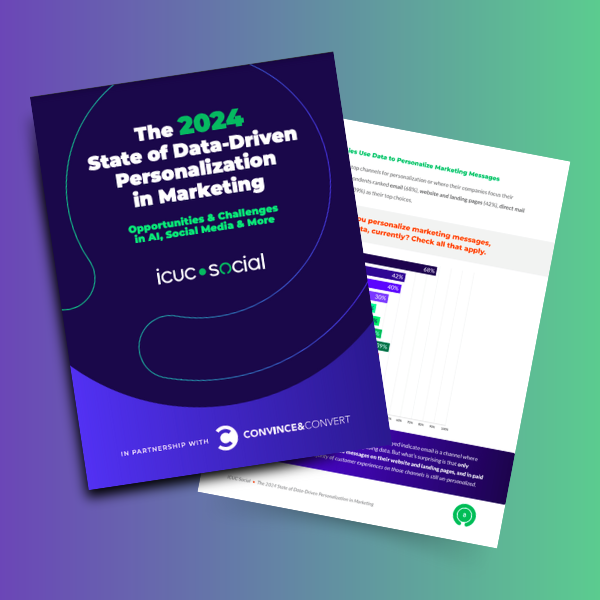Marketers excel at crafting persuasive messages for external audiences, guiding them toward product solutions and inspiring action. However, the art of communicating effectively with internal teams, such as sales, product, and executives, can often be overlooked. It’s easy to forget that every meeting and presentation is an opportunity to strengthen collaboration among teams, aligning them with a shared organizational mission.
While marketers are adept at conveying data and results, the rush of the daily grind sometimes hinders the creation of compelling narratives around this information. We may neglect the vital aspect of making data relatable and inspiring to other teams, encouraging them to work harmoniously toward overarching goals beyond their respective departments.
In the following blog post, we’ll delve into the D.A.N.C.E. Data Storytelling framework, an invaluable tool for crafting narratives around data. This framework is designed to bridge the gaps between teams, fostering collaboration and making data a unifying force within your organization.
The Power of Data Storytelling
Data Beyond Numbers
Marketers often present data and results without crafting a compelling narrative. To bridge the gap between teams, it’s essential to go beyond the numbers and build a story around your data. This makes it more accessible and engaging for different audiences.
The Benefits of Data Storytelling
Combining data and storytelling can have big positive effects on the organization:
- Makes data more accessible and engaging
- Builds trust and credibility in data and people
- Encourages audiences to care about the data and actions required to reach goals
- Encourages participation and collaboration, especially across teams who need to work together but haven’t historically shared information or worked towards common goals.
Time is Precious. Use a Data Storytelling Framework.
In a world where time is a precious commodity and countless priorities demand your attention, how can you effectively weave a narrative around your data?
The solution lies in leveraging a framework. It’s the most efficient and rapid approach to constructing a comprehensive and captivating data story, particularly when the goal is to bridge gaps between colleagues and teams that may not be accustomed to collaboration. This framework offers a streamlined path to fostering new communication methods and collaboration, all in service of achieving larger business objectives.
Do you use a data storytelling framework within your organization? Click To TweetThe D.A.N.C.E. Data Storytelling Framework
The D.A.N.C.E. Data Storytelling Framework includes five parts to pull together all the elements to create a story that holds the audience’s attention and makes including an “ask” easier.
1- Data
To create an effective data story, start by selecting the right metrics. Ensure your data is:
- Aligned to business and team goals
- Relevant
- Timely and current
- Granular or detailed
- Actionable
2- Audience
Knowing the audience is critical to drafting the right story and providing the right amount of detail and context to communicate effectively.
Things to know about the audience:
Expertise Level: Are they well-versed in the topic, or do they require more foundational information?
Decision-Making Authority: It’s crucial to ascertain whether your audience has the authority to make decisions, as this significantly influences the story’s content and focus.
Time Constraints: Be mindful of the time limitations associated with the meeting or presentation, as this will impact the depth and scope of your narrative.
Expectations: Understanding the audience’s expectations as they enter the meeting or presentation allows you to align your narrative with their needs and desires effectively.
3 – Narrative
Choose a straightforward narrative structure. Craft an engaging storyline utilizing data and goals. Ask why each point matters and when action should occur.
Sweep or double-check the narrative for the following key details:
- Goal alignment (business and teams)
- Relevance of data (why is this important?)
- Timeliness (when should this happen?)
- Highlight holes or gaps in the data
- Audience expectations or desired outcomes
4- Cadence
Match the pacing, tone, and language to the complexity of your data and the audience. Use pauses strategically to allow information to sink in.
5- Engagement
Encourage interaction through Q&A, polls, and clear next steps. Promise follow-ups to maintain collaboration and keep your audience engaged.
Conclusion
Effective data storytelling requires effort but can be a powerful tool for building collaboration between teams. By using the D.A.N.C.E. Data Storytelling framework, you can transform metrics into persuasive stories that drive progress and collaboration towards common business goals.
You may be interested in my episode on the Social Pros podcast:


